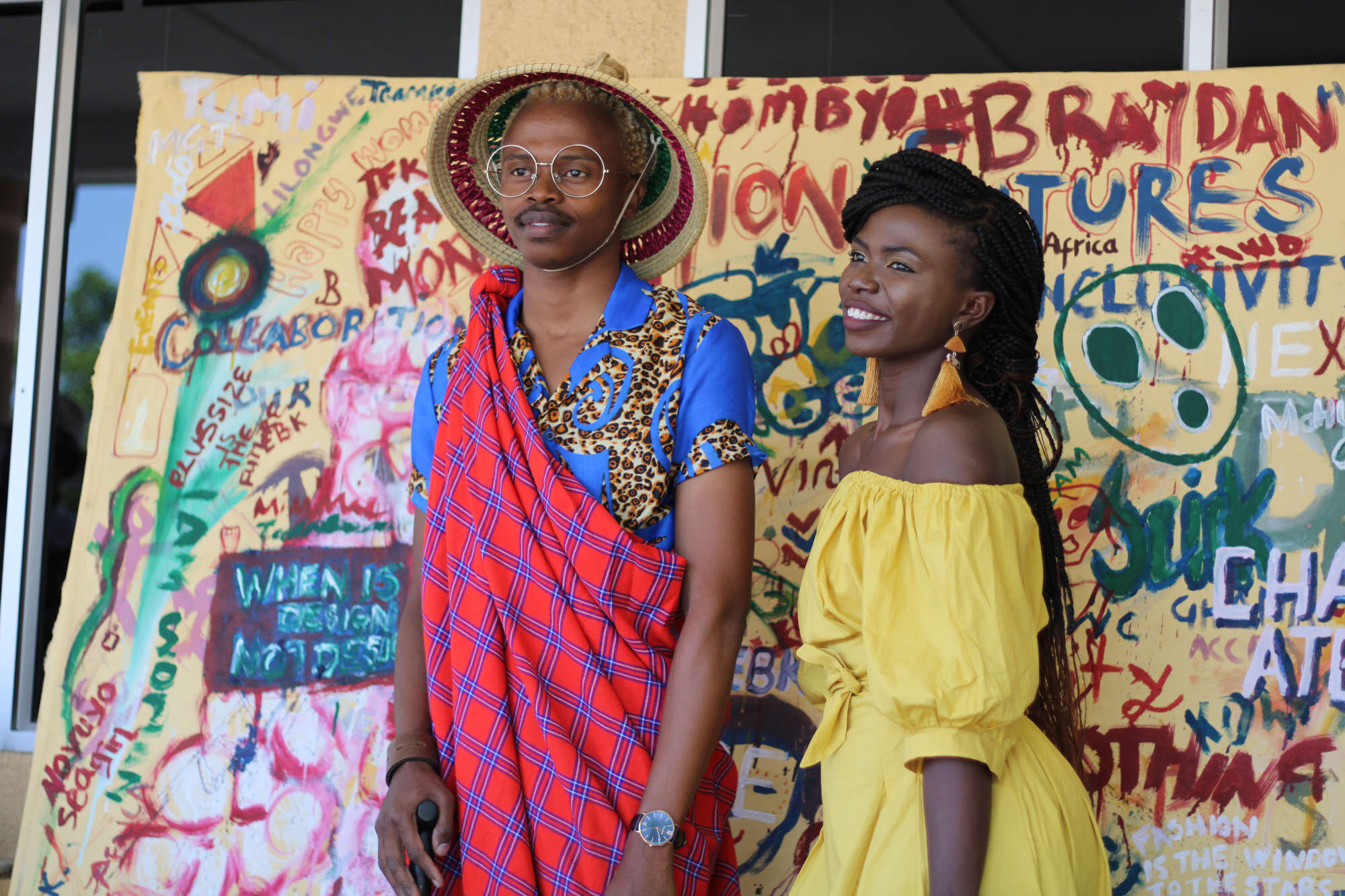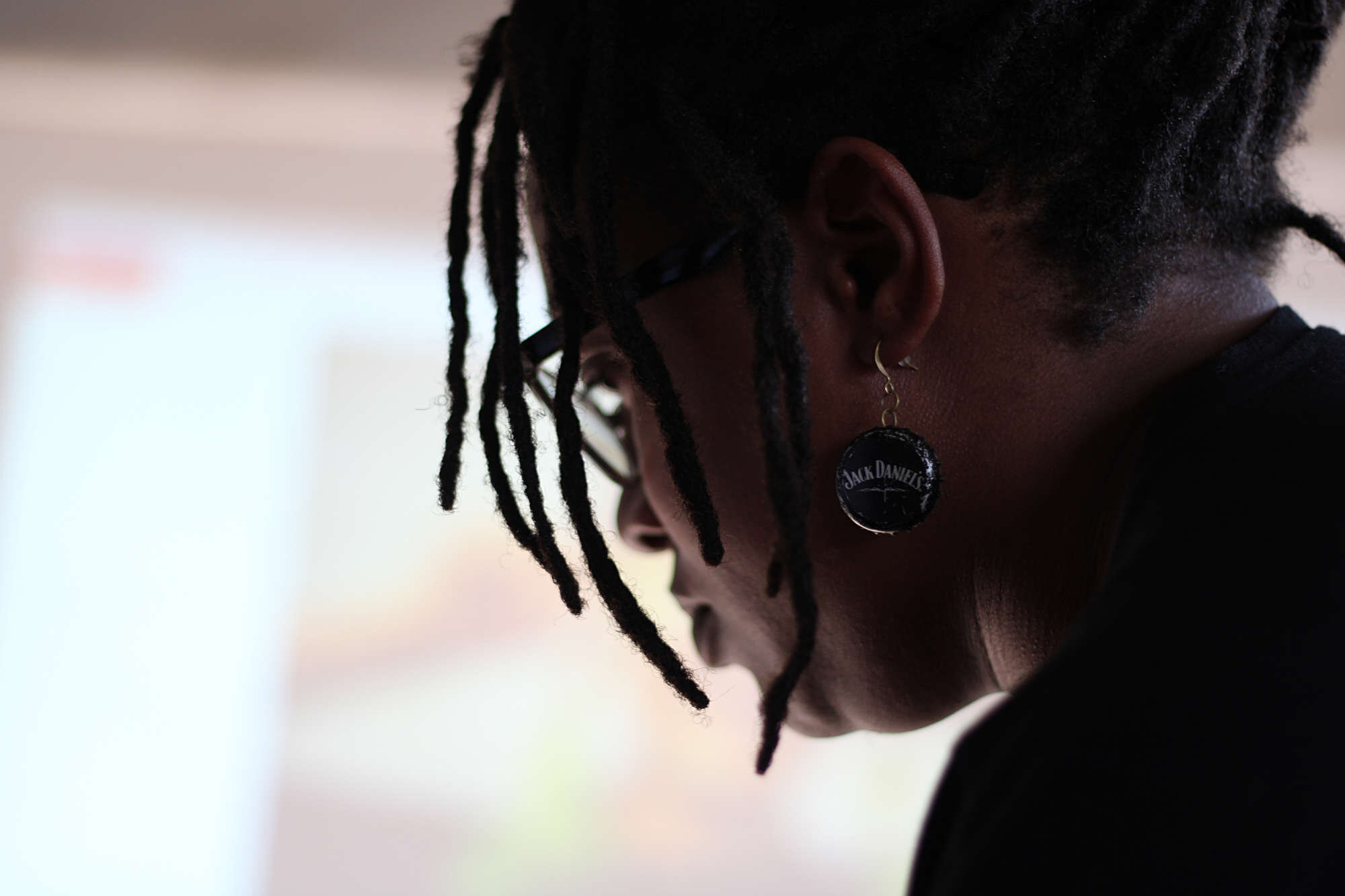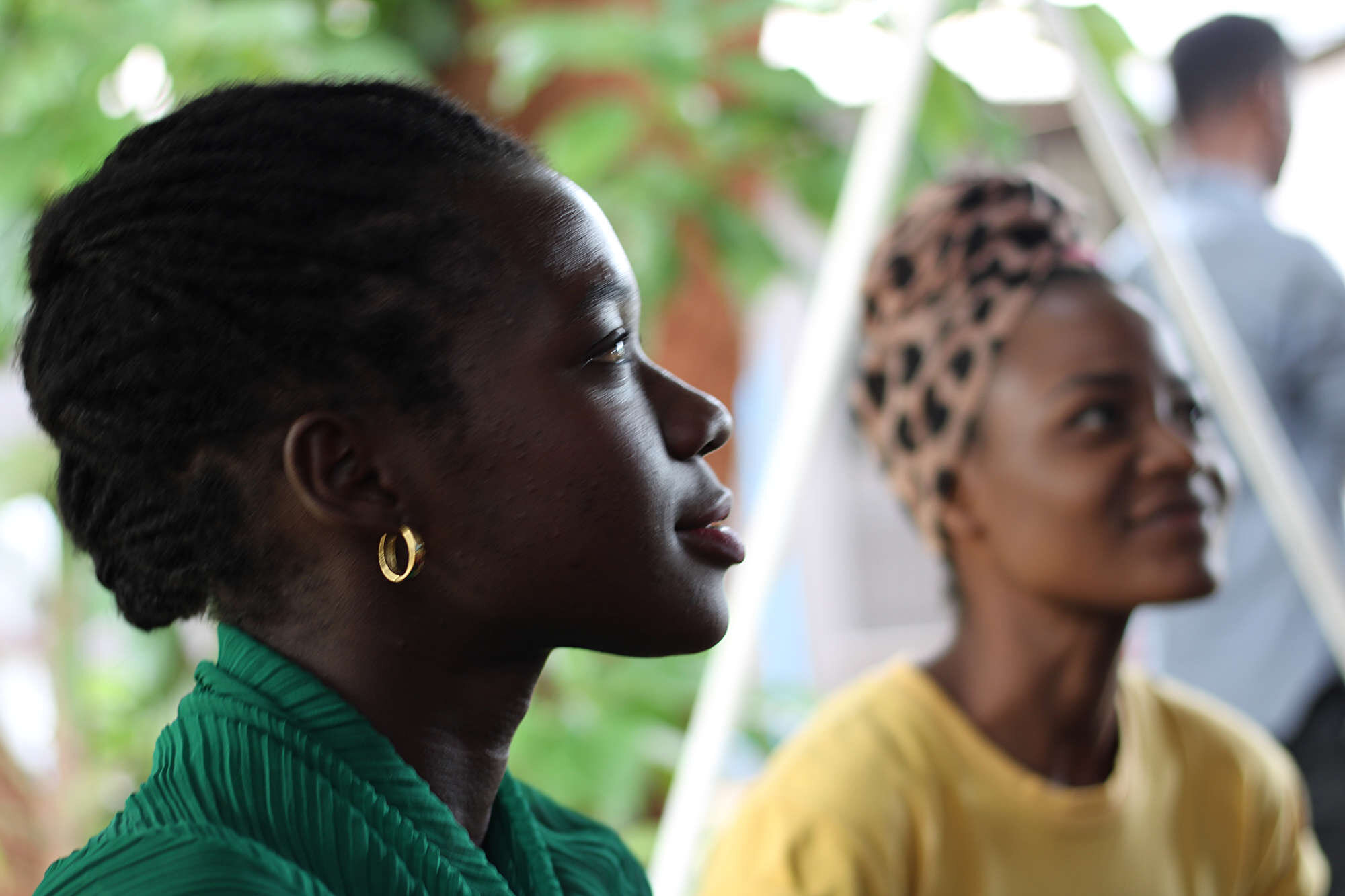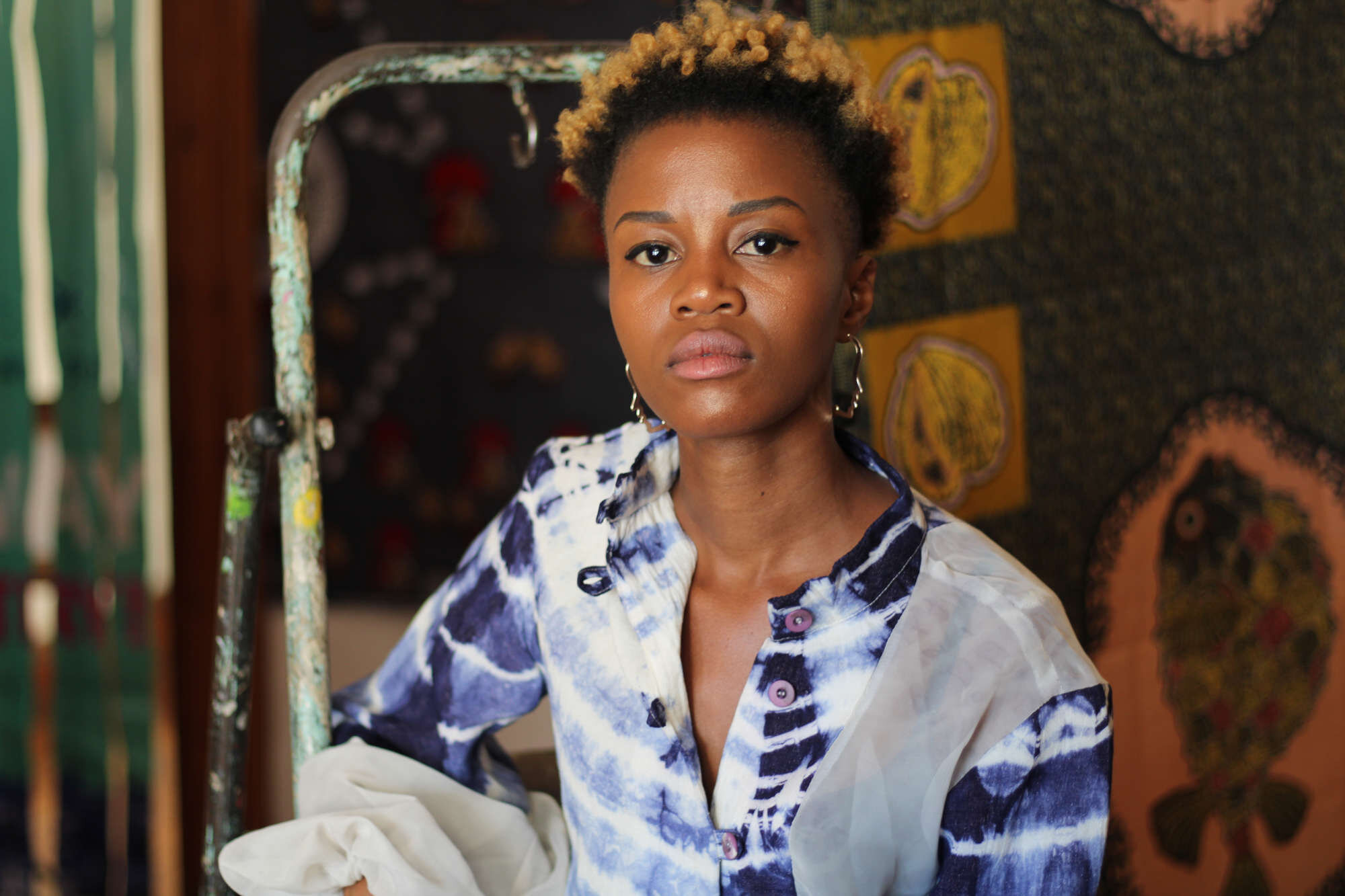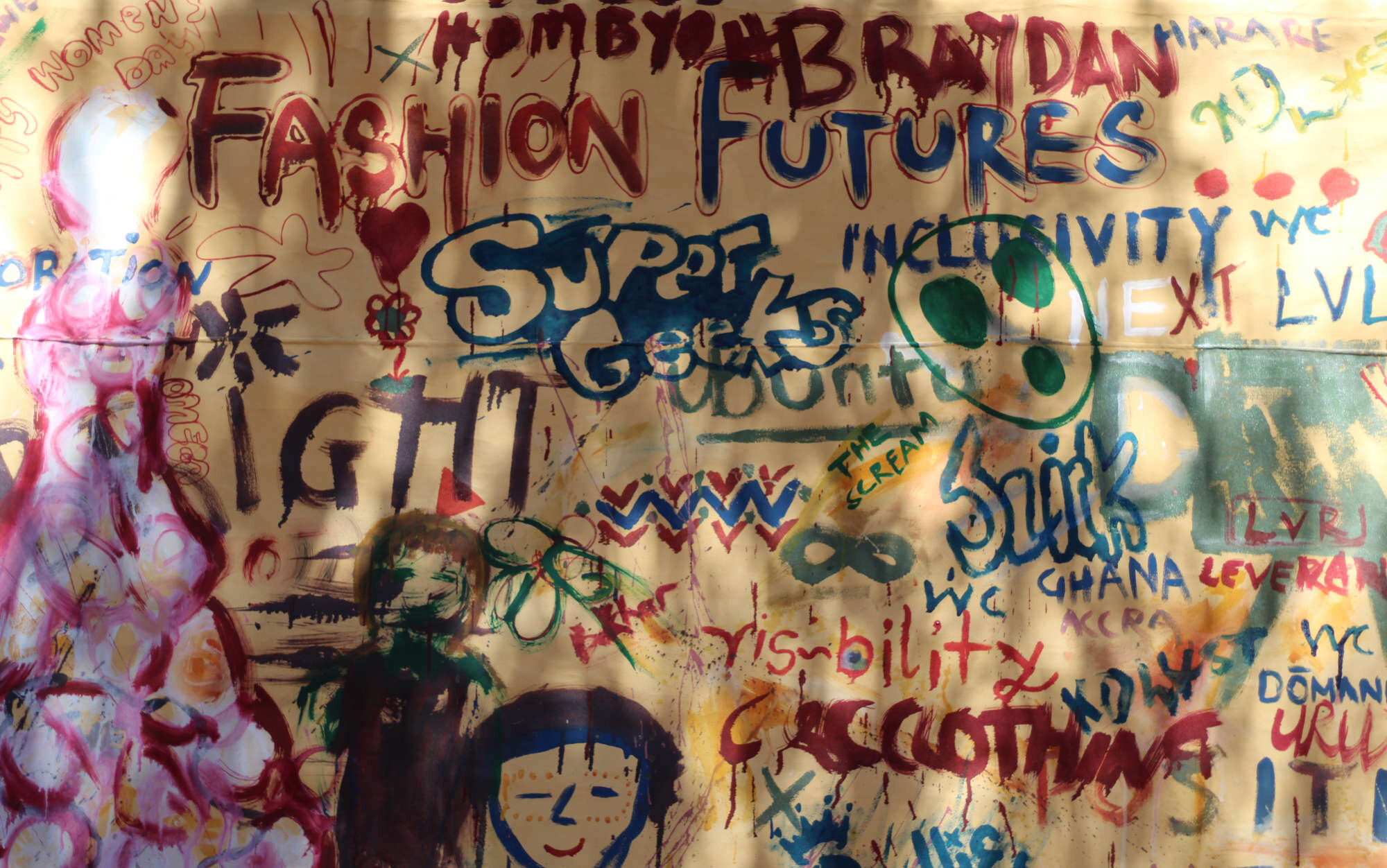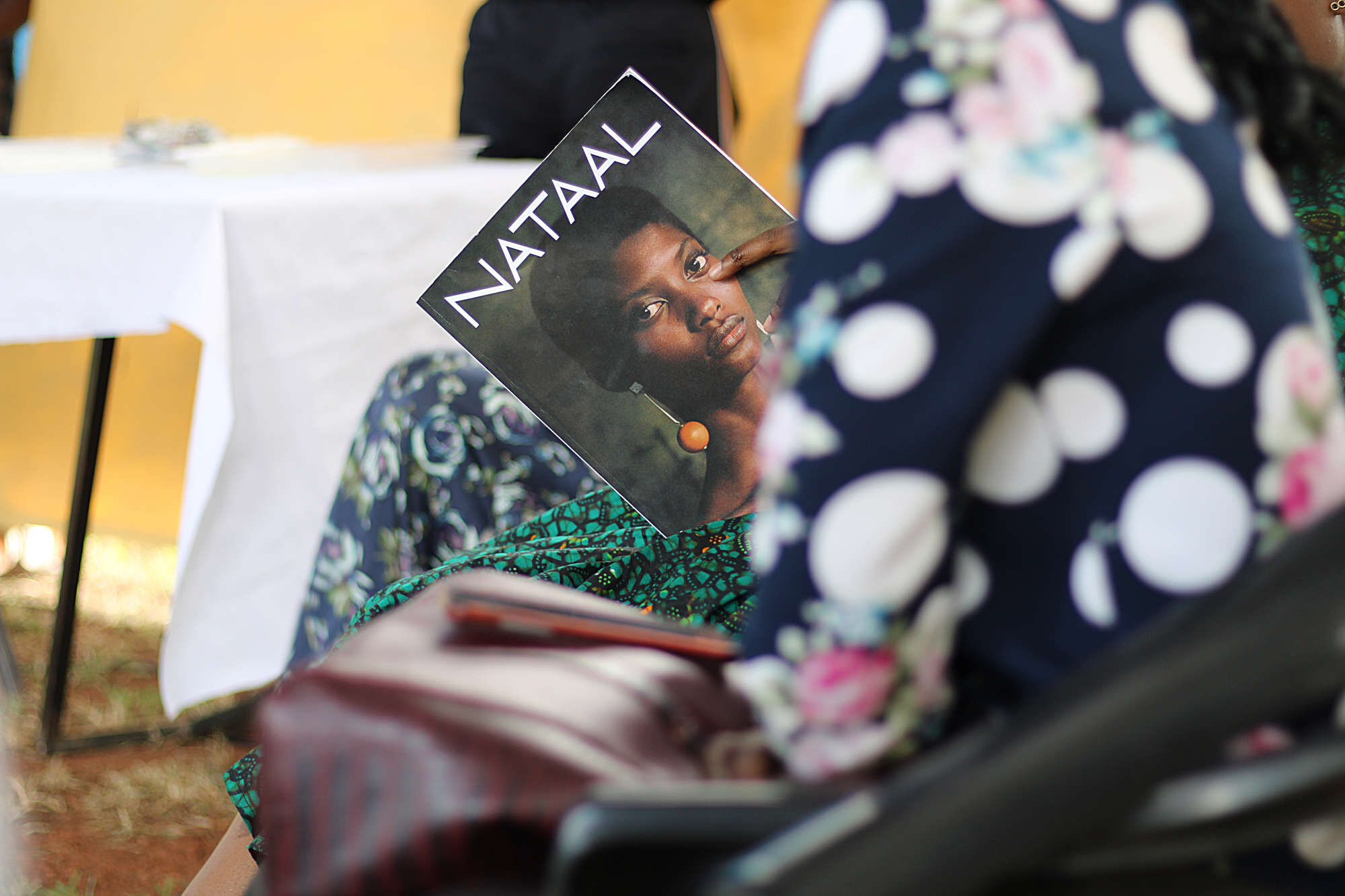An on the road diary of Fashion Futures - the British Council and Chenesai’s sustainable fashion project uniting Southern Africa and the UK
Fashion Futures is a project led by Zimbabwaen social change agent Chenesai and the British Council Southern African Arts in association with Nataal Media. The project has brought together four women from diverse academic backgrounds to carry out groundbreaking research on the underground and sustainable fashion industries in their countries and create compelling stories from their findings. “Fashion Futures aims to collectively work towards developing a more nuanced, rich and international dialogue around the future of the global fashion industry,” explains Chipo Kanyumbu from British Council Zimbabwe.
The research team comprised Zimbabwean visual artist Lucia Nhamo, who went to the UK; British Ghanaian writer, curator and visual anthropologist Adjoa Armah who travelled to Zimbabwe; Malawian beauty and wellness expert Thokozani Spoon Phiri, who headed to Namibia and Namibian design and fashion creative Leah Misika, who made her way to Malawi.
“At a pivotal time for the industry, Fashion Futures acts as a catalyst for new research into emerging sustainable fashion practice in Southern Africa and the UK,” explains Hannah Robinson from the British Council Architecture Design Fashion department. “It offers a platform for contemporary curatorial voices to present the workings of four different local creative eco-systems - unpacking new approaches to sustainable design, zero-waste manufacturing and materials.”
The project tested the fluidity of cultures in what is increasingly referred to as a global economy. The idea of bringing together storytellers from different cultures and backgrounds to explore and translate each other’s fashion territories is conceivable in a digital world where access is always within reach, but it took more than access to pull off an exchange of this magnitude. Once our four storytellers were selected through an interview process in autumn 2018, they had several weeks and free reign to prepare their lines of inquiry.
“Fashion Futures acts as a catalyst for new research into emerging sustainable fashion practices”
During the pre-travel phase of the project, digital resources were key in gathering secondary data. The research team perused different online platforms including social media to familiarise themselves with aspects of the fashion industries they would be immersing themselves in. This proved an effective way of connecting with key people and shaping their trip itineraries. They also leant on the knowledge and connections of their fellow researchers and Fashion Futures collaborators based on their host countries.
Research trips - February 2019
At the end of February the storytellers travelled to their research countries and had only a few days to connect their pre-conceived material to the reality on the ground. The team soon discovered more than what digital access afforded them; they drew from their knowledge and similarities within their own cultures and experiences in the world, to relate to the people they interacted with and to make sense of their findings.
Leah who was researching chitenge, was already familiar with the colourful fabric which had crossed over into Namibia. Lucia chose to relate sustainable fashion to sustainable food movements that are already gaining traction around the globe. Adjoa focused on reframing style and she was in a position to depict Zimbabwe’s young designers through the lens of how she has seen fashion work in both the UK and Ghana. Thokozani delved into thrifted fashion in Namibia through similar attitudes within Malawi.
Harare - 4-8 March 2019
After their trips, the team converged in Zimbabwe and participated in a content creator mixer in Harare, the capital city, that brought together a diverse pool of local creatives, as well as private and government officials to discuss the state of the fashion industry in Zimbabwe. The Harare leg also included mentorship sessions between the project contributors and Helen Jennings, editorial director of Nataal Media. An interactive exchange ensued with the local creatives, with questions around how the Zimbabwean creative industry can work more collaboratively in the different spheres of trade, media, design, content and visuals.
Bulawayo 08 - 11 March 2019
The next few days were spent in Bulawayo, the second largest city in Zimbabwe and informally dubbed the cultural capital owing to the preserved heritage within the city. Inclusivity was an important element of the project and presenting the second phase in Bulawayo allowed the project participants – most of whom were foreign to Zimbabwe - to be exposed to the diversity of the country. Harare is traditionally Shona speaking and Bulawayo is Ndebele speaking, both with different cultures. The Shona are regarded as typically conservative while the Ndebele are more experimental, especially in terms of fashion. The idea was to allow the participants to add to their discoveries in a space that has a different style landscape.
The programming began with a creative mixer with Bulawayo based creatives, which set the tone for the kind of audience each of the participants would be showcasing their work to and allowed them to get a feel of the differences between the two cities. Over the next two days, the participants presented their research findings in the form of installations at different spaces around the city.
“Zimbabwe is a good case study for understanding how you build a fashion industry from scratch”
Lucia’s installation, titled ‘A Slow Fashion Cookout’, was set at a shisa nyama, an outdoor brai where traditional food is cooked on an open fire with blazing music and drinks floating. Guests enjoyed their delicacies as they watched her present slides showcasing the designers she met in London and their different approaches to sustainability.
“I chose to present this project at a shisa nyama because it provided this quintessential slow Zimbabwean food as a back drop to the slow fashion processes that I was sharing with everyone,” Lucia explains. “Fashion Futures as a project for me has been about connecting the dots, conceptually amongst ourselves as creators and at a contextual level relating what we have been researching to what has been happening in Zimbabwe.”
Adjoa presented her installation, titled ‘Reframing Style’, at the National Gallery, one of the main regional galleries housing contemporary visual art. Her installation took the form of screens spread around the gallery garden, showcasing the works of the artists and makers she met in Harare and the conversations they shared around Zimbabwean fashion. Visitors were invited to interact with Adjoa to learn more and share their opinions.
“I wanted to create a situation where I was trying to understand the whole ecosystem around Zim fashion. What are the conditions under which people are working, what problems are they facing, and what breadth of work are they doing?” Adjoa asks. “I think this project was interesting because Zimbabwe is a good case study for understanding the fashion industry more broadly and how you build an industry from scratch. It’s such a unique situation here.”
Leah’s installation, titled ‘I Speak Chitenge’, was also presented at the National Gallery. Stylised chitenge fabric was creatively hung in a room and Leah took groups of visitors through the space explaining her interpretations of the prints on each fabric. After, she took the visitors through another room where they watched videoed interviews Leah had recorded in Malawi with some chitenge fabric traders and makers.
“I wanted to portray the messages on the textiles that we love to adorn ourselves with in Africa and to ask, are we going to create new messages and what are those messages going to be? I want people to understand that these are not just textiles with motifs. It’s important to know the message you wear,” Leah says. “Going to Malawi made me realise that fashion in Africa needs encouragement for evolution, which is why the research part is important. We need to understand what is happening around the world to even start to claim the future as young creatives.”
Zani’s installation, titled ‘What Does Sustainability in Fashion Mean to You?’, was set in a Brazilian restaurant. In her presentation, she shared her interviews with Namibian designers and discussed her learnings about the country’s fledgling approaches to sustainability. She also presented a brief runway show with models dressed in second hand clothing sourced from a local thrift market, thereby proposing thrifting as a way to be sustainable. The installation ended with a question and answer session.
“Fashion Futures intrigued me because of all the dynamic areas the project wanted to reach through creating content. As an area of research, I decided I needed to figure out what we know about sustainable fashion and to look more closely at how the ways we style ourselves impacts the environment,” Zani says.
The culmination of each contributor’s final work is now being debuted on Nataal and will also be published on other digital media and social platforms. Going forward, Fashion Futures hopes to become an annual programme that ignites multiple and far reaching conversations around undiscovered fashion, how to imagine new narratives for sustainable fashion across Africa and how to connect it to global audiences.
“This exciting body of work that has been produced hopes to contribute to the framing of sustainable policy that will ensure that fashion is a lucrative trade for the young generation,” Chenesai concludes.
Read Lucia’s report on the UK here
Read Leah’s report on Malawi here
Read Adjoa’s report on Zimbabwe here
Read Zani’s report on Namibia here
Words and photography Tatenda Kanengoni
Visit British Council Southern African Arts
Visit Chenesai
Published on 13/11/2019


